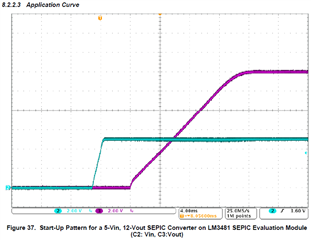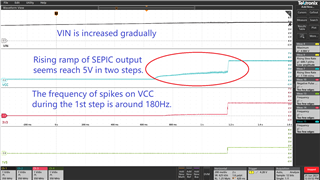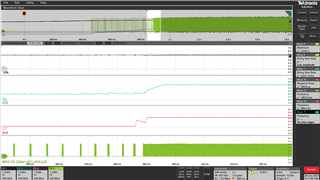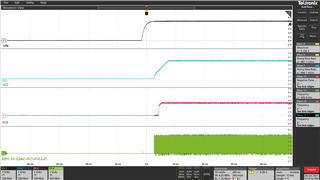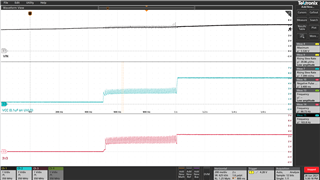Hello,
I have a question of LM3481 SEPIC circuit in our design. Input voltage of our system ranges from 4.75V to 24.5V, output voltage of SEPIC circuit is 5V (VCC in the schematics below) with up to 1.2A capacity. This VCC is converted to 3.3V with another regulator, then that 3.3V is converted to 1.5V with another regulator again.
When input voltage is turned on directly, all the power rails seems fine, the system can work normally. But when the input voltage increased gradually from 0V to 5V, it is found that it takes VCC about 1 second to slowly climb to around 2V and then go up to 5V. When VCC is around 2V, there is fluctuation on 3.3V and 1.5V, which potentially breaks the sequence requirement of 3.3V and 1.5V. As a result, the system can't work normally.
We tested LM3481 SEPIC EVM board, connect its VOUT to VCC in our system. When we increased the input voltage from 0V to 5V gradually, we found its output rising ramp was quite stable and there was no problem on 3.3V and 1.5V either.
I checked all the components with LM3481 datasheet and AN-1484. It seems there is no obvious problem except that the output capacitor doesn't have enough rated ripple current and low enough ESR (There are some capacitors for VCC at other locations of the board), so I added some more capacitors at the output as shown in the schematics below. It could only reduce some noise (fluctuation) on VCC but still could not make a beautiful (linear) rising ramp.
I am wondering if you could suggest if there is anything wrong in my design. Thank you!
Here is the schematics

Below is the measurement of input voltage (VIN), VCC, 3V3 and 1V5 when VIN is increased gradually.
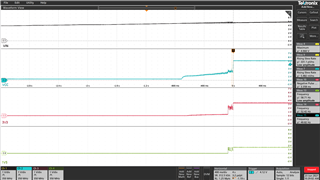
Below is a start-up waveform from LM3481 datasheet. We found when LM3481 SEPIC EVM is connected with our system, VCC has a very clean rising ramp (similar to the picture below).
